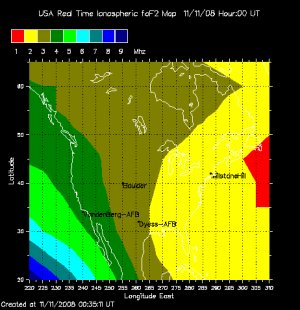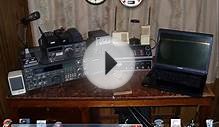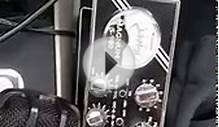![[Open CME Tracker]](http://www.calapna.org//img/solarhamcom_solar_cycle_24_space_weather.jpg)
© 2002-2015 by Harold Melton, KV5R. All Rights Reserved. (not incl. imported data)
Propagation Maps from Australian Space Weather Agency
These update once an hour
Real-Time NVIS MUF Map

For much more info, see the new NOAA Space Weather Enthusiasts page.
An Introduction to Space Weather and Propagation, in Plain Language
Amateur Radio operators who use HF generally like increased sunspots because they correlate with better worldwide radio propagation. When there are more sunspots, the sun puts out radiation that charges particles in the earth’s ionosphere. Radio waves bounce off of (refract from) these charged particles, and the denser these clouds of ions, the better the HF propagation.
When the ionosphere is denser, higher frequencies will refract off it rather than passing through to outer space. This is why every 11 years or so when this activity is higher, 10 meters gets exciting. 10 meters is at a high enough frequency, right near the top of the HF spectrum, that radio waves propagate very efficiently when the sunspot count is high. Because of the shorter wavelength, smaller antennas are very efficient on this band, so mobile stations running low power on 10 meters can communicate world wide on a daily basis when the sunspot cycle is at its peak. There are also seasonal variations, and 10 meters tends to be best near the spring or fall equinox. If the ionosphere is not so dense, the Maximum Usable Frequency may be below 10 meters, and perhaps only signals with frequencies as high as 15 meters or below will propagate. The sunspot numbers used in this bulletin are calculated by counting the spots on the visible solar surface and also measuring their area.
Solar flux is another value reported in this bulletin, and it is measured at an observatory in Penticton, British Columbia using an antenna pointed toward the sun hooked to a receiver tuned to 2.8 GHz, which is at a wavelength of 10.7 cm. Energy detected seems to correlate somewhat with sunspots and with the density of the ionosphere.
INTERESTING VIDEO











